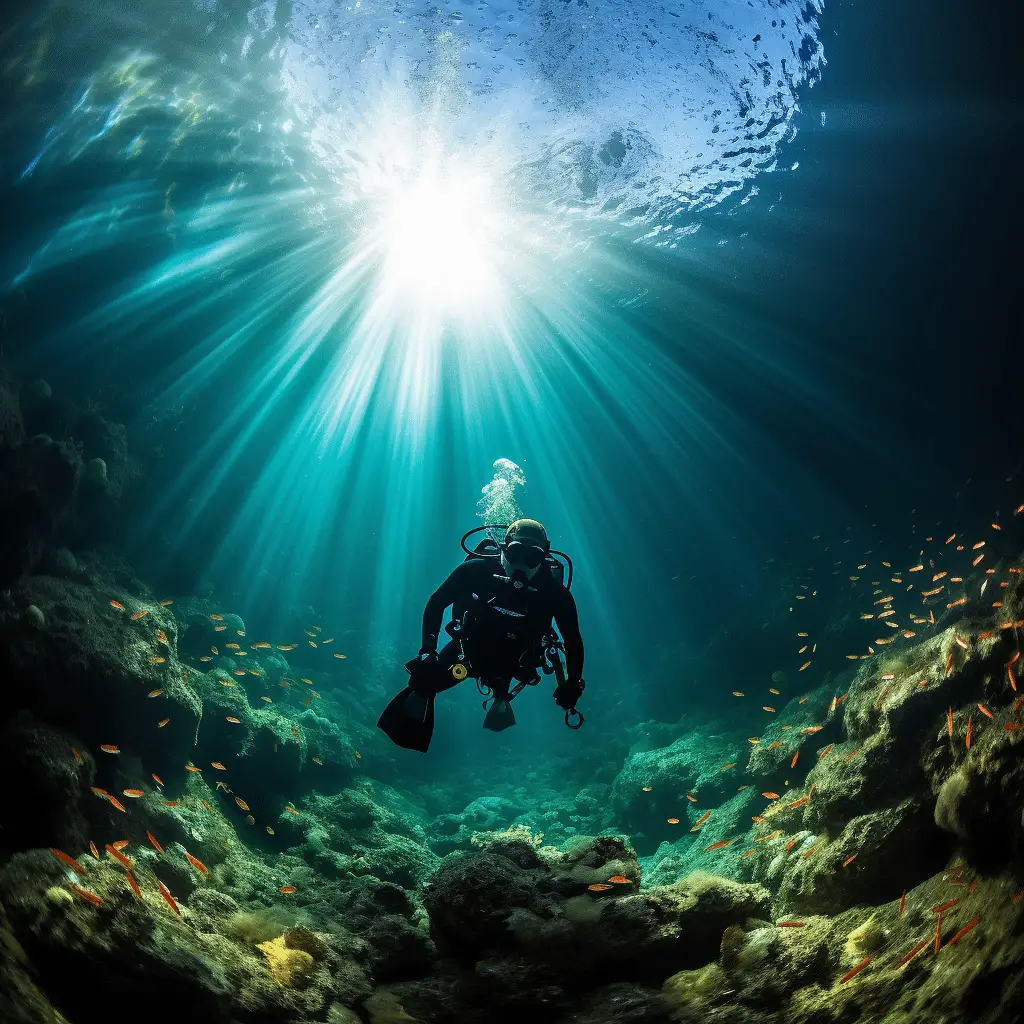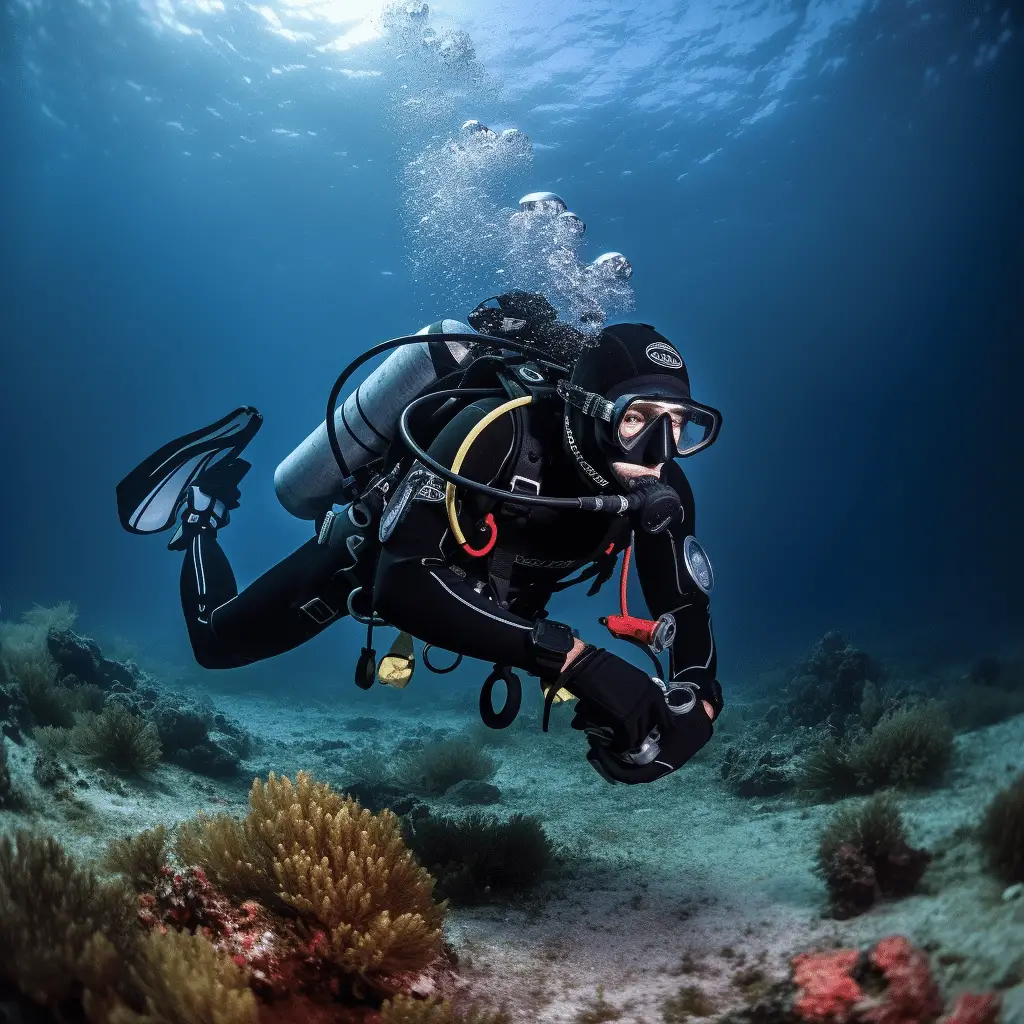Once you finished your training and certification to become an open water scuba diver,
Finally, you will enter the mesmerizing underwater world that you’ve ever dreamed of.
However, scuba diving doesn’t talk only about how you will explore, admire, experience, and breathe in the underwater world.
Basically, before you safely dive, you need to acquire some basic skills and techniques.
With that said, the Professional Association of Diving Instructors, or PADI, is an extraordinary asset for diving courses and certification.
Here, I will share with you what are the skills needed in scuba diving.
Basic Scuba Diving Skills to Master

Swimming
The number one most basic skill that you need to master is swimming.
You have to swim to get from guide A toward point B when in the water.
In any case, the sort of swimming in scuba diving isn’t as tiring and difficult contrasted to swimming at the surface without the guide of the aid of buoyancy compensation devices to keep you above water and with blades to effortlessly push you.
Hardware or Equipment Acclimation
Scuba diving requires particular gear. You should be comfortable with its operations, assembly, disassembly, uses, and care.
- Instrument perusing and checking
- Proper care and cleaning
- Assembly
- Disassembly
- Operation
Pre-Plunge Checks
Going through your planner before diving in the water can spare a dive and may spare lives.
Lamentably, this progression can, without much of a stretch, be underestimated.
Most issues underwater can be securely kept away from if pre-driving checks are done altogether.
- Proper weighing check
- Buddy check
Dive planning, Communication, situational and natural mindfulness
Plan the dive, dive the arrangement, concur in everything consistently.
- Greatest profundities, most extreme time, pivot time, isolated diver conventions, crisis methods, and so forth.
- Hand signal
- Review technique
- Perilous marine life to look out for
- water development changes, profundity changes
Controller drills
These are skills that you have to do when the controller is out of your mouth for some explanation. Without the idea of how to securely return it normally in your mouth, you’d be breathing water rather than air.
- Clearing
- Recuperation
- Controller swim trade
- Free streaming controller relaxing
Masks drills
Another skill you need to master is how to covers can flood and haze underwater; a kindred jumper can knock them off, or the lash could snap. Realizing how to return them and clear them is fundamental to an increasingly pleasant dive.
- Mask clearing
- Mask removal
- No mask breathing
- No mask swims
BCD Drills
A buoyancy compensation device makes your dive simple, fun, and easy. The ability to utilize it appropriately and recognizing what to do when it falls flat isn’t just significant; it can spare you or your pal’s life.
- Inflate / deflate
- Oral inflator use
- Low weight hose detachment
- Power inflator use
Entry, Ascent, and Descent Techniques
Since getting in and out of the water isn’t as simple as 1, 2, 3. There are set up safe methods for going down and going up. Different profound water passages are important, and learning when to utilize what method is essential to do.
- Shore
- 5-point descent
- 5-point ascent
- Backroll
- Giant Stride
- Controlled seated entry
Air Exhaustion Works Out
These skills are needed for scuba diving because it is where your life depended.
Come to think of it, what do you do when you come up short on air? What you do right now either spare you or harm yourself? Ace, these procedures, like your life, relied upon it!
- Flagging or Signaling
- Substitute or Alternate air source use
- Controlled emergency swimming ascents (CESA)
Critical Thinking Drills
You can’t talk underwater; you can’t simply swim up to the surface every time you experience an issue. Most issues can be abstained from during pre-plunge checks, hardware disappointments, cramps, and other minor things during the jump. You can securely explain them by rehearsing these abilities.
- Weight expulsion and substitution
- Scuba unit expulsion and substitution
- Cramp expulsion
- Tired the diver towing
- Free cylinder band fixing
Neutral Buoyancy & Hovering
Knowing the rule, understanding the methods, and paying cognizant exertion can help you float like a genius.
By a long shot, the most troublesome scuba diving aptitude to ace. How you drift is the thing that isolates you from a beginner diver to an accomplished diver.
Different Skills
Other abilities that, when aced, make you a superior diver and a superior pal.
- Navigation
- Appropriate or Proper kicking
- Skin Diving
- Surface marker float (SMB) sending
Basic advances, strategies, subtleties, and the motivations behind these aptitudes are talked about to you by your teacher during your in-water preparation.
Buoyancy
Buoyancy Control is the most important scuba skill for every diver to become an expert. While acing daintiness isn’t generally an inconvenient endeavor, it requires calm, connection with the mind, and steady exercises.
The divers do this with the help of a softness control contraption (BCD). Delicacy control is constrained by various components, to be explicit BC development, balance weight, trim, introduction suit daintiness, significance, and breath control.
You will use less air when your softness is on point. By managing your delicacy, you’ll go without hurting corals, antiquated rarities, and marine common environmental factors by pulling your instruments or extremities close to the sea base.
Controlled Descents
The descent in scuba diving ought to consistently be performed gradually and smoothly. In the wake of ensuring your apparatus is set and the current is ok for jumping, you should continue even out the weight in your ears as you dive; for certain divers, that could mean each 12-18 inches. Diving also rapidly can make your eardrums crack, which could prompt progressively genuine intricacies.
The descent is a vital piece of each diver. Divers who figure out how to control their plunges float tenderly down without arriving on the reef or working up the sea’s sand floor.
Appropriately controlled plunges make diving increasingly agreeable and less distressing, yet they are additionally significant for diver security. A diver who plunges toward the base in an uncontrolled manner could experience difficulty halting in case of an ear evening out trouble, may surpass his greatest profundity, or might endeavor pointlessly.
Emergency Ascents
It’s uncommon that you’ll wind up in a circumstance where you’ll have to utilize a crisis climb procedure since divers consistently check their hardware completely before going diving. Coming up short on air is now enough to warrant a crisis climb on account of an unexpected instance of hardware disappointment. However, you ought to completely comprehend what to do when the requirement for one emerges.
Practice PADI’s four emergency ascent procedures (ordinary rising, interchange air source rising, crisis swimming rising, and light crisis rising) at whatever point conceivable, so you don’t freeze when a genuine crisis happens. The pal breathing rising is never again on PADI’s rundown of crisis climb methodology because of the technique’s hazard and muddled nature.
Scuba Hand Signals

Figuring out how to communicate well underwater with your diver amigo’s is certainly expertise that necessities practice. Divers utilize all-inclusive hand signs to impart everything from climb to an ear issue. Taking a couple of seconds to audit underwater diving signals with your diver pal makes correspondence simpler during scuba diving.
Underwater correspondence equipment is costly and not constantly solid, so don’t invest your energy staring off into space about conversing with your plunge amigo underwater. Learn suitable hand flags. Some hand signs will shift contingent upon your area and the individual giving the preparation, yet the significant signs, as “alright” or “out of the air,” are widespread.
Give cautious consideration to the hand signals examined at the plunge instructions, so you realize how to move toward your pal your tank pressure, if your ears are not evening out, or if there are sure marine creatures in the region.
Conclusions:
Exploring underwater can be a breathtaking and fun experience. The best experience that you will cherish, whether you are with your family and friends.
Learning the basic skills needed for scuba diving will prevent you from any risk or dangers during your underwater.
Those details, critical steps, procedures, and the purposes of those skills above will be discussed with you by your diving instructor during your in-water training practices.
With enough and better practice, you can become a certified diver who is capable and ready for any kind of situation in your diving adventures.
